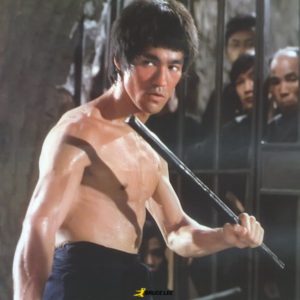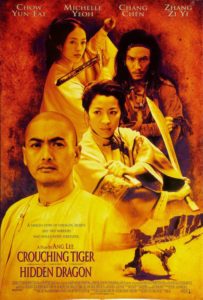
Source: Twitter
Whether it’s the brilliantly absurd Beverley Hills Ninja, or the genre-defining Enter the Dragon, eastern culture has permeated western cinema for well over half a century. And with the Asian movie-going public fast becoming the most lucrative on Earth, Hollywood’s love affair with the East doesn’t show any signs of abating.
Early Years
It’s fair to say that Hollywood doesn’t have the greatest track record when it comes to East Asian culture, and early incarnations were predictably flawed. Characters such as Fu Manchu and Mickey Rooney’s Mr. Yunioshi in Breakfast at Tiffany’s saw Caucasian actors in culturally insensitive roles. Certainly in the case of Breakfast at Tiffany’s Rooney’s absurd one-dimensional performance has marred for many what might otherwise have been considered one of the great films of the twentieth century.
It took a breakthrough star like Bruce Lee, who himself had fallen prey to Hollywood’s cultural prejudice – famously losing out to David Carradine (a white actor) for the lead role in TV series Kung Fu – to bring true Asian culture to western screens. After several huge hits in China and Hong Kong, Hollywood came calling, and Lee’s blistering performance in Enter the Dragon finally propelled him to international super stardom. Sadly, for Lee, he wouldn’t live to see it, falling ill and dying just days before the US premiere.

Source: Twitter
The Golden Age
By the nineteen eighties, with the cult of Bruce Lee and the success of films like The Karate Kid, Eastern culture had begun to proliferate western cinema. Japanese progress was inspiring a new generation of filmmakers – Ridley Scott’s magnificent neon cityscape in Blade Runner mirroring the rapid rise of Tokyo’s metropolis – and Chinese mysticism was at the core of money spinners like Big Trouble in Little China. No wonder then that these Eastern influences were beginning to spill out into the wider culture, with a Dojo on every corner and a banzai tree on every coffee table; a phenomenon that we take for granted today, with Samsung phones in our pockets and panda-themed slot machines in online casinos such as Ladbrokes, which offers bonuses through Oddchecker. But scratch the surface in the nineteen eighties and we still see glimpses of the old stereotypes. Mr Miyagi as the ascetic Karate master, Ming the Merciless as the devious villain – a white actor portraying an obviously Asian role while sporting his very own version of the Fu Manchu moustache.
It would take another giant leap in the ensuing decades before we finally saw an honest cultural depiction on screen. Even Bruce Lee had to make concessions, sharing the billing on Enter the Dragon with less than agile (Caucasian) co-star John Saxon. But with films like Ang Lee’s stunning visual masterpiece Crouching Tiger, Hidden Dragon, and Zhang Yimou’s House of Flying Daggers, we finally saw authentic Asian storytelling by Asian actors and Asian directors. This wasn’t Eastern culture chopped up and fed to us piecemeal, this was the real thing; and it took Western audiences by storm. The Guardian even named Crouching Tiger, Hidden Dragon as one of its top 25 action films of all time.

Source: Twitter
The Modern Era
Fast forward to the present day and western film studios are increasingly turning their gaze Eastwards, scrambling to grab a slice of the burgeoning Asian film market. No fluke then that recent Hollywood blockbusters have given more than a passing nod to Asian audiences. Big summer releases like last year’s Kong: Skull Island are increasingly looking to popular Asian stars to boost overseas numbers, and some franchises have gone even further in pursuit of the almighty yen. Take 2016’s Captain America: Civil War which sees Tony Stark switch his super-friends’ phones from LG to Vivo in an obvious appeal to the Eastern market. Vivo isn’t even available stateside, but it just happens to be the most popular mobile phone in China. Even Disney’s uber-franchise Star Wars has had to adapt. While J.J. Abram’s 2015 rebirth was hugely successful, the obvious nostalgia for the original trilogy didn’t play well in China, pulling in a fraction of what backers might have expected. No coincidence then that 2016’s follow-up, Rogue One, features two of Asia’s biggest stars, Donnie Yen and Jiang Wen.
So is this a sign of things to come? Almost certainly. With modest estimates predicting China will overtake the US as the largest movie-going audience by 2019, more and more studios will be looking to the East; a far cry from the early days of Hollywood and a reflection of the massive economic shift that has seen China, Japan and South Korea rival the US and Europe not just in the box office, but on the global stage.


